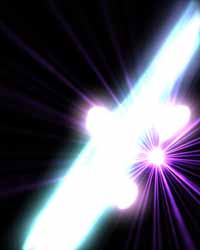Radiation hardening joins the space age
The high-radiation space environment presents a significant hazard to critical electronic components and devices used in extra-atmospheric applications. Satellite communications and Earth observation applications require high storage capacities, while abiding by stringent power consumption limitations. Radiation-tolerant programmable and erasable non-volatile memories promise a breakthrough where one-time–programmable memories are currently used. The EU-funded project 'Development of rad hard non volatile flash memories for space applications' (SKYFLASH)(opens in new window) sought to develop such radiation-tolerant flash memories. Project partners concentrated their efforts on realising non-volatile memory devices by implementing principles from terrestrial memory technology. Specifically, they developed a radiation-hardening-by-design (RHBD) methodology taking the best of complementary metal-oxide semiconductor (CMOS) silicon processes. RHBD ensures electronic components are resistant resilient to damage by protons, electrons and high-energy ions. Using very accurate design methodologies previously developed in static random access memories, RHBD was explored on standard 180 nm CMOS silicon processes. The final 1 MBit reprogrammable memory prototype includes all basic blocks of non-volatile memories. The memory cells were based on a floating trap oxide–nitride–oxide (ONO) approach. During the course of the SKYFLASH project, several test vehicles were subjected to gamma and X-rays in order to evaluate the loss of electrons stored in the ONO cell media. In all cases, charge loss exhibited the same behaviour. More importantly, it was also demonstrated that even if data are lost after exposure to high-intensity radiation (in the hundred kilorad range), the content of the memory can be rewritten. Single event effects have been tested on the same samples using protons and heavy ions providing evidence that no ruptures occurred even at the highest energy available on the beam line (Xenon ions). Radiation-hardened non-volatile flash memories are not suitable only for space applications. SKYFLASH partners may find new fields of application as the new technology is adapted for nuclear power-generation equipment and high-energy physics experiments. Although focused on non-volatile silicon memories, it is also expected to offer the technology base for other silicon devices, such as microprocessors required in space applications.







